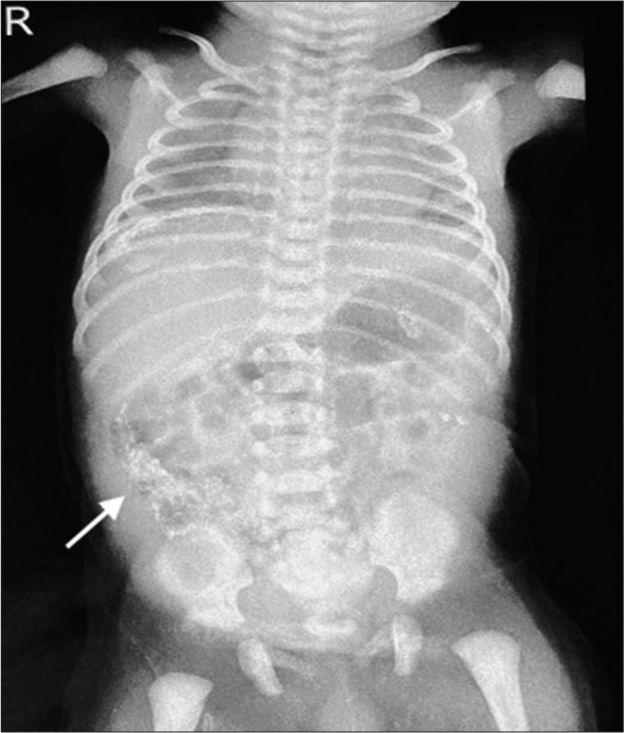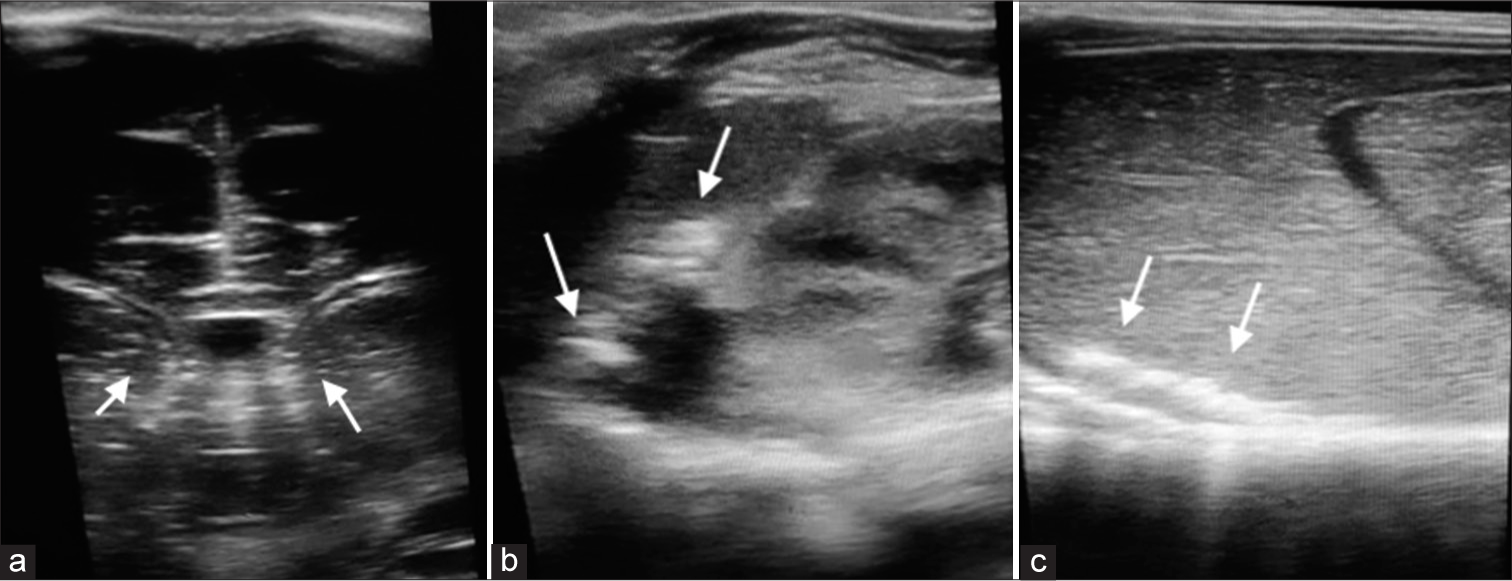Translate this page into:
A neonate with calcifications in antenatal and postnatal ultrasound scans: A neonatologist’s perspective
*Corresponding author: R. R. Prashanth, Department of Neonatology, Seth GS Medical College and KEM Hospital, Mumbai, Maharashtra, India. prash2635@gmail.com
-
Received: ,
Accepted: ,
How to cite this article: Prashanth RR, Goyal M, Haribalakrishna A, Thakkar HU. A neonate with calcifications in antenatal and postnatal ultrasound scans: A neonatologist’s perspective. Wadia J Women Child Health. 2024;3:108-9. doi: 10.25259/WJWCH_25_2024
A 20-year-old primigravida delivered a female neonate vaginally at 38 weeks of gestation. Antenatal ultrasound at 29 weeks found fetal ascites. A repeat scan at 32 weeks showed resolution of ascites with calcification seen on the visceral peritoneum liver and spleen.
Anthropometry at birth: Head circumference was 31.5 cm (−2 standard deviation [SD] to −3SD), birth weight was 2550 g (0 to −2SD), and length was 48 cm (0 to −2SD) as per the World Health Organization growth charts. The rest of the examination was normal. Postnatal X-ray showed fleets of intra-abdominal calcification [Figure 1]. Abdominal and periventricular calcification were seen on ultrasound [Figure 2]. Work-up including complete blood count, calcium, polymerase chain reaction for cytomegalovirus (CMV), and toxoplasmosis and clinical exome study were negative.

- Fleets of intra-abdominal calcification (white arrow) on postnatal day 1.

- Ultrasound images demonstrating calcification (white arrows). (a) Periventricular calcification with multiple calcifications along the vessels within the thalami, (b) renal calcifications, and (c) hepatic calcifications on postnatal day 2.
Important differentials include congenital infections: CMV, toxoplasmosis, and genetic disorders associated with hypercalcemia. Short-term outcomes are favorable as seen in the current case.[1] In neonates requiring surgery, a postoperative mortality rate of 8.1% has been reported.[2]
Ethical approval
Institutional Review Board approval is not required.
Declaration of patient consent
The authors certify that they have obtained all appropriate patient consent.
Conflicts of interest
There are no conflicts of interest.
Use of artificial intelligence (AI)-assisted technology for manuscript preparation
The authors confirm that there was no use of artificial intelligence (AI)-assisted technology for assisting in the writing or editing of the manuscript and no images were manipulated using AI.
Financial support and sponsorship
Nil.
References
- Meconium peritonitis: Correlation of antenatal diagnosis and postnatal outcome-an institutional experience over 10 years. Fetal Diagn Ther. 2017;42:57-62.
- [CrossRef] [PubMed] [Google Scholar]
- Fetal meconium peritonitis-prenatal findings and postnatal outcome: A case series, systematic review, and meta-analysis. Ultraschall Med. 2022;43:194-203.
- [CrossRef] [PubMed] [Google Scholar]





